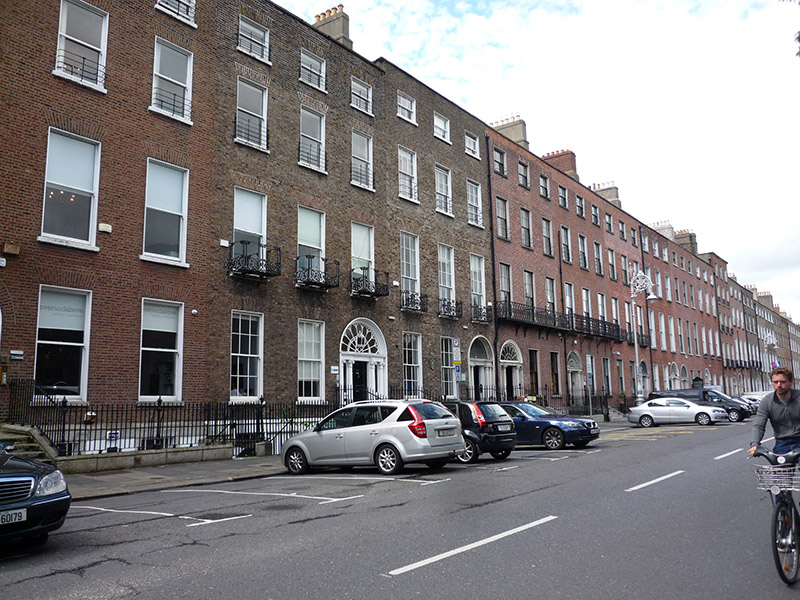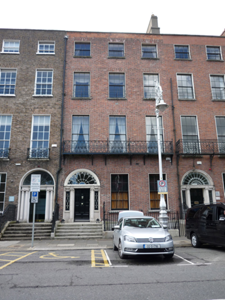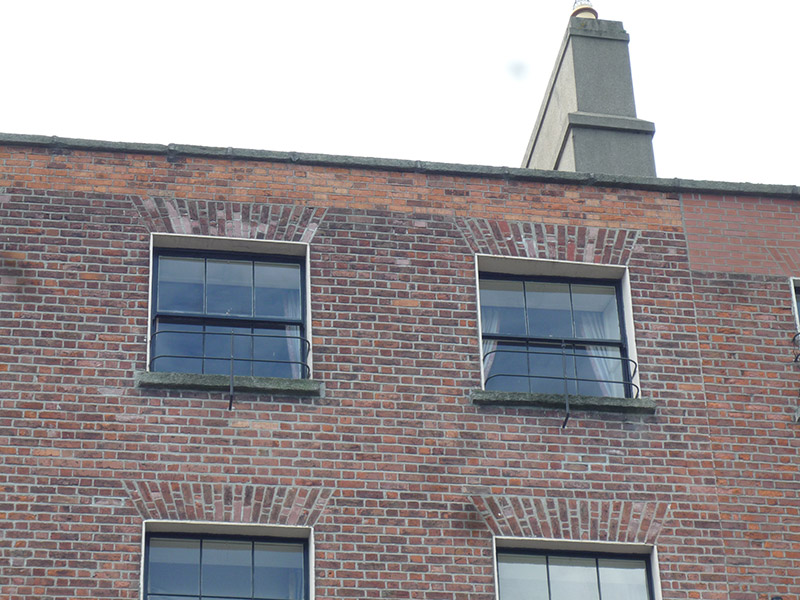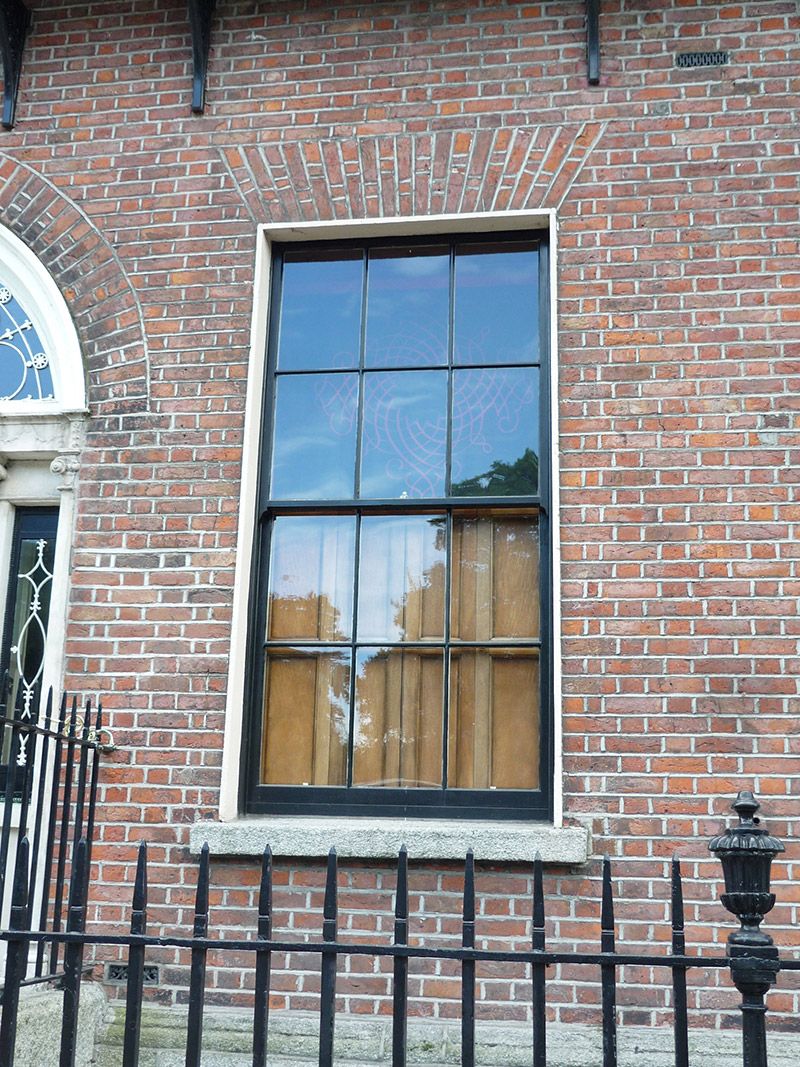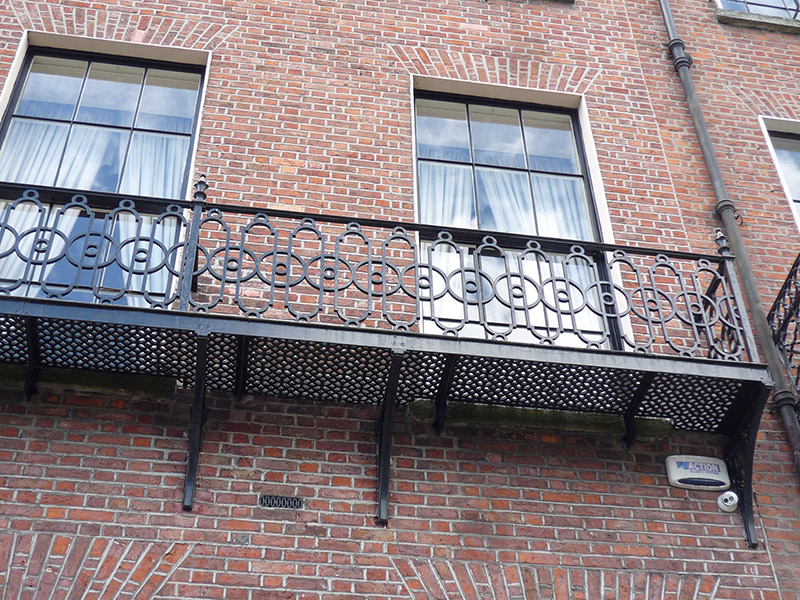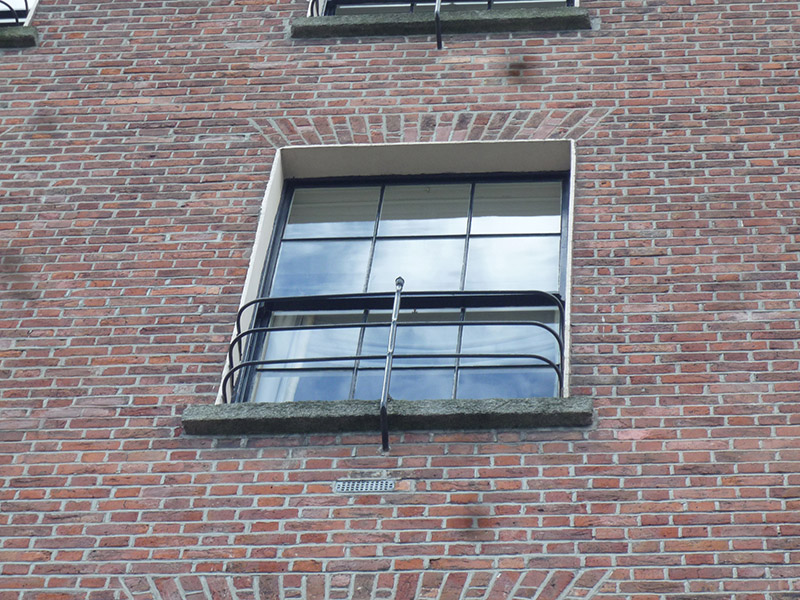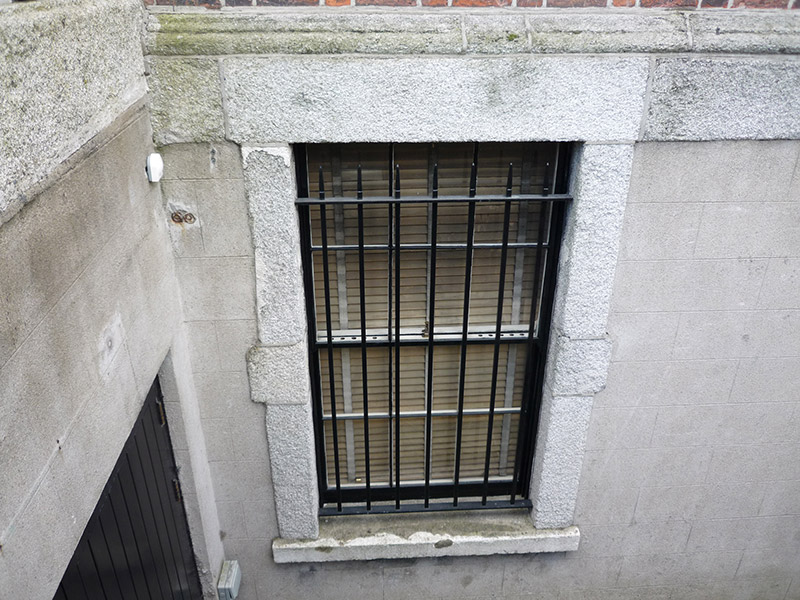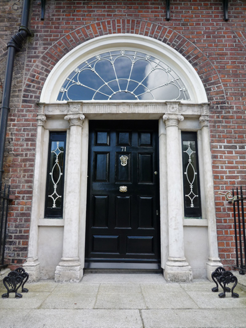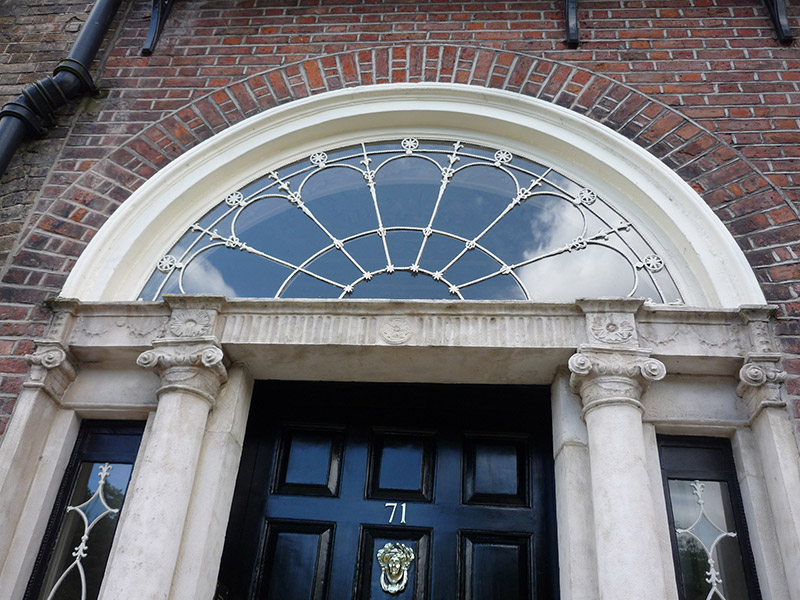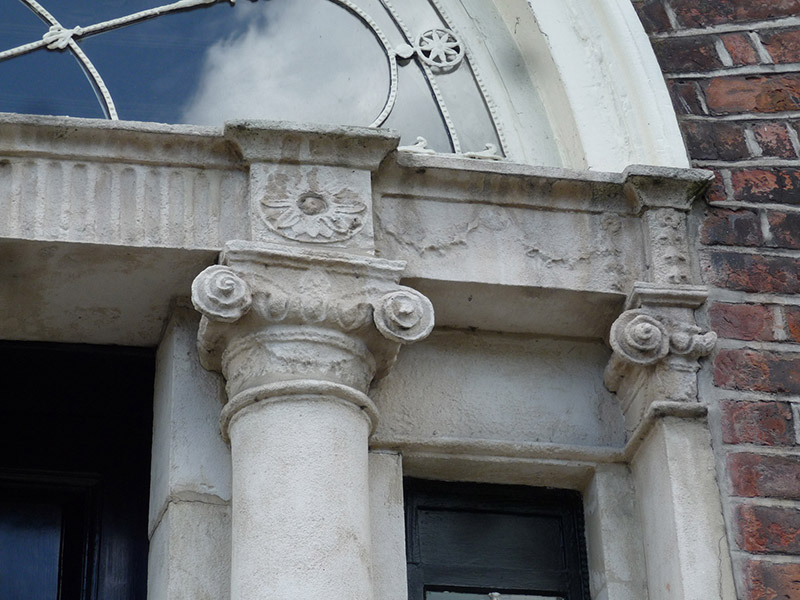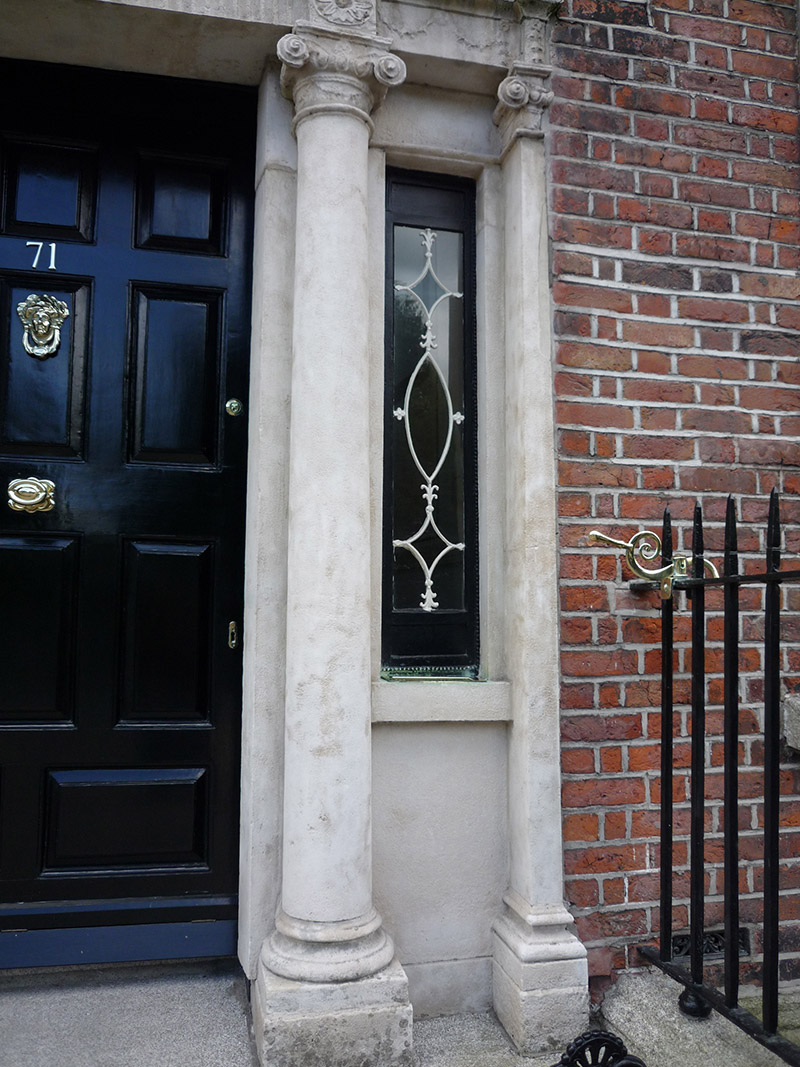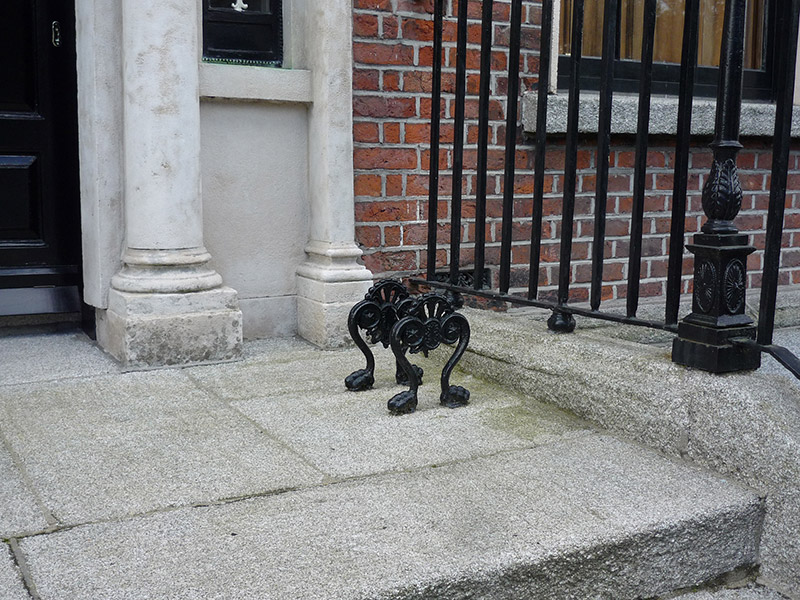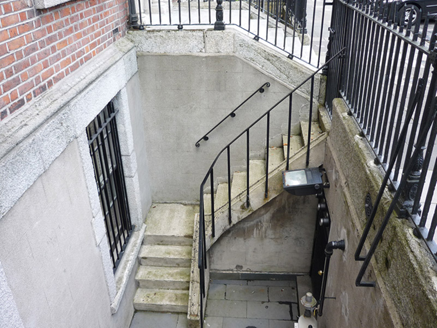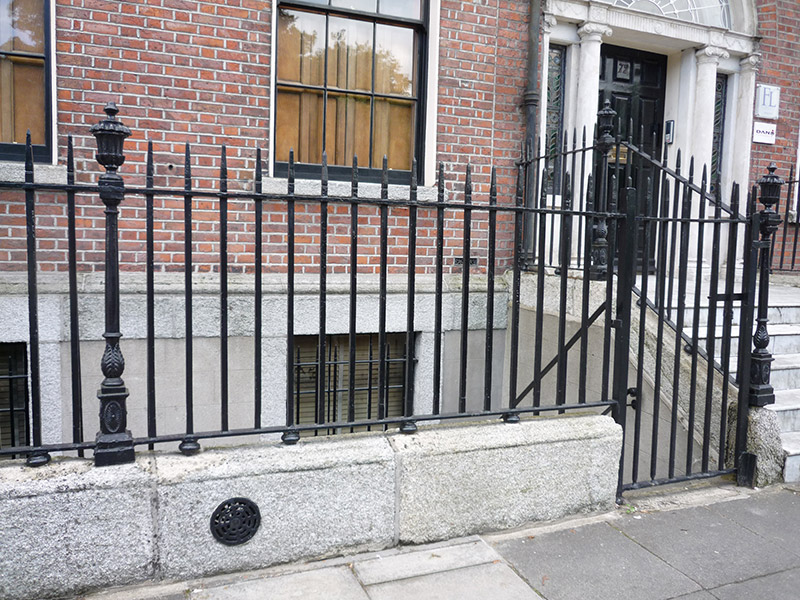Survey Data
Reg No
50100417
Rating
Regional
Categories of Special Interest
Architectural, Artistic
Original Use
House
In Use As
Office
Date
1785 - 1795
Coordinates
316610, 233474
Date Recorded
29/07/2016
Date Updated
--/--/--
Description
Attached three-bay four-storey former house over basement, built c. 1790 apparently as one in terrace of seventeen, having bow to two western bays of rear elevation, four-bay two-storey return over basement to third bay and single-storey addition to basement level of bow. Now in use as offices. Pitched slate roof to front, hipped to east end, behind rebuilt Flemish bond brown brick parapet with granite coping, and two hipped roofs to rear perpendicular to street, larger over bow. Shouldered rendered chimneystacks to west with clay pots. Concealed gutters to front elevation, and cast-iron downpipe to east end. Flemish bond brown brick walls to front elevation with moulded granite plinth over ruled-and-lined rendered walls to basement, and yellow brick walls to rear elevation. Square-headed window openings, diminishing in height to upper levels, with painted rendered reveals, soldier arches and painted granite sills; exposed granite block-and-start surrounds and wrought-iron grilles to basement; and round-headed stairs window to east bay of rear elevation. Timber sliding sash windows, front elevation having three-over-three pane to top floor, two-over-two pane to basement and six-over-six pane elsewhere, and rear having six-over-six pane to stairs window, nine-over-six pane to first floor of bow, and other arrangements elsewhere. Ornate cast-iron balcony to full-width of first floor, and wrought-iron window-guards to top two floors. Round-headed principal doorway with paired Ionic columns flanking decorative leaded geometric sidelights, fluted frieze and cornice, decorative radial leaded fanlight, cavetto-moulded architrave and twelve-panel timber door with brass furniture. Granite platform with cast-iron boot-scrapes and five granite steps. Wrought-iron railings enclosing basement area with decorative cast-iron posts on moulded granite plinth. Timber-sheeted door provides access to basement. Garden to rear, with double-roofed mews house to stable lane. According to Casey (2005), interior has good cornices and best example of vestibule, a nineteenth century addition, off stairs at first floor, on the square. carparking to rear.
Appraisal
No. 71 Merrion Square is an elegant Georgian house that forms part of the eighteenth-century square developed by the Fitzwilliam Estate. The relatively modest façade of the building is enlivened by its fine Ionic doorcase, comprising a decorative leaded fanlight and sidelights. The ornate metalwork to the first floor balcony provides additional visual and craft interest, and the railings contribute interest to the street frontage. According to Casey, its interior has significant plasterwork to the first floor vestibule. The building and its intact setting details contribute significantly to the intact appearance of this important architectural set-piece. The square is one of the best-preserved Georgian streetscapes in Ireland. The north, east and south sides are lined with terraced houses of eighteenth and early nineteenth-century date, while the west side is terminated by the garden front of Leinster House. The houses maintain a relatively uniform building height and design, attributed to standards promoted in Fitzwilliam's leases. Individuality was introduced through the design of doorcases, window ironwork and interior decorative schemes. The south side of Merrion Square was initially set in large plots of twelve leases; plots were leased consecutively from east to west up until the row was completed in 1791.
